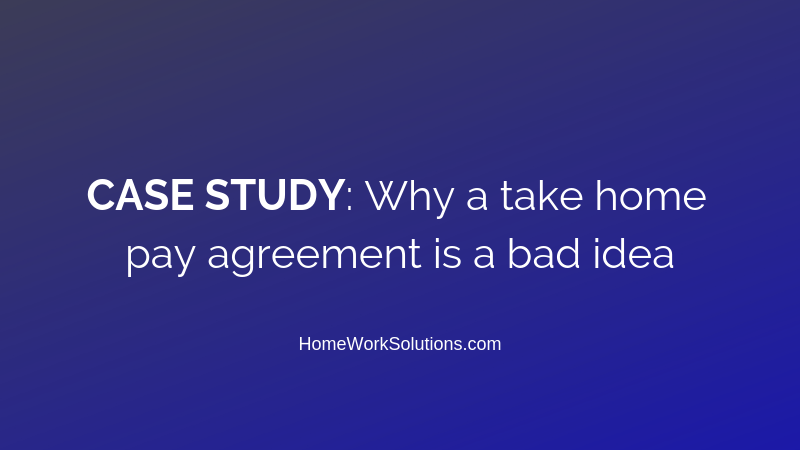
Background
A client in Texas , Jane, hired a home care worker to help her mother around the house, an important hire to help her mom live safely and independently at home. Jane’s mother lives alone and has recently had to give up her driver’s license due to health issues. She needs someone to help her get out to meet her friends, get to doctor appointments and help with groceries and errands. She also has some housekeeping areas she can no longer safely do herself.
Jane’s mother needs a varying amount of help week to week. Jane found a flexible caregiver who agreed to help her Mom between 25 and 40 hours a week. Jane and the caregiver agreed to a take home pay of $18 an hour after all taxes.
After 6 weeks, Jane and the caregiver had a disagreement on her pay. Her weekly hours had been 28, 36, 32, 32, 36 and then 42 hours. Jane paid the home care worker a net pay of $756 which is $18 for each hour. The caregiver expected $774 as she had two hours of overtime.
This disagreement over a mere $18 brought an important point to light. Neither Jane nor the caregiver knew really how to calculate the overtime; for Jane the idea of overtime was brand new. For the first 5 weeks the caregiver's hourly rate varied between $20.75 and $21.93 to reach a take home of $18 an hour - another complication that was not anticipated caused by our progressive income tax system. Week 6 was over 40 hours, meaning that Jane is obligated to pay overtime at 1.5 times the hourly rate. What exactly is the hourly rate?
The Rules
Household workers are hourly rate workers under Federal law. When the household worker does not live with the employer, Federal law mandates overtime.
In the illustration above, the hourly rate has varied week to week due to the sliding scale of the income taxes. Jane found herself in a situation that she didn’t anticipate when she hired the caregiver. Exactly what hourly rate was she to use?
The Solution
The situation Jane and the caregiver found themselves in was unintended, and they negotiated the take home pay agreement in good faith not understanding the consequences. Jane contacted HomeWork Solutions and after discussing the situation with a Client Care Specialist she agreed to put the worker on a gross hourly rate of pay that is intended to AVERAGE to an $18.00 pay rate. In this particular situation it worked out to $21.60 per hours. Jane and the caregiver agreed after looking back that this should get them close to this $18 number. Jane further agreed that if at the end of the year there was a shortfall she would make it up in a bonus to the worker. If there was an overage there would be no adjustment.
To keep the payroll completely transparent, and make her life easier, Jane enrolled for HWS Complete Payroll Service, which calculated the proper withholdings each payroll, provided the caregiver direct deposit and a pay stub each pay day, and freed Jane from the headache of quarterly tax filings too.
Jane was pleasantly surprised when the year ended 5 months later that the take home pay had averaged $18.08. She felt the additional $42 she had paid the employee over the period was a small price for the simplicity of the arrangement.

